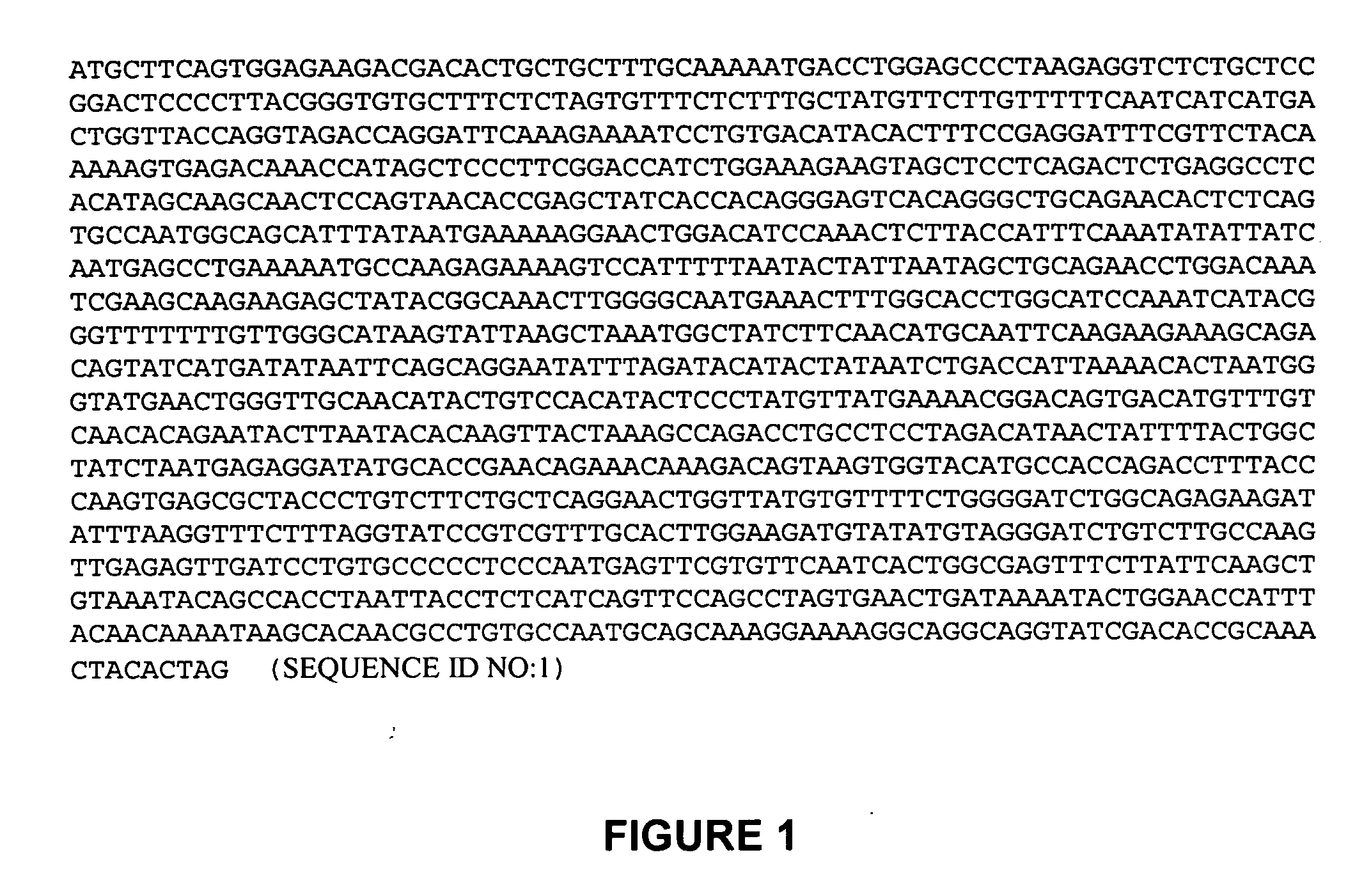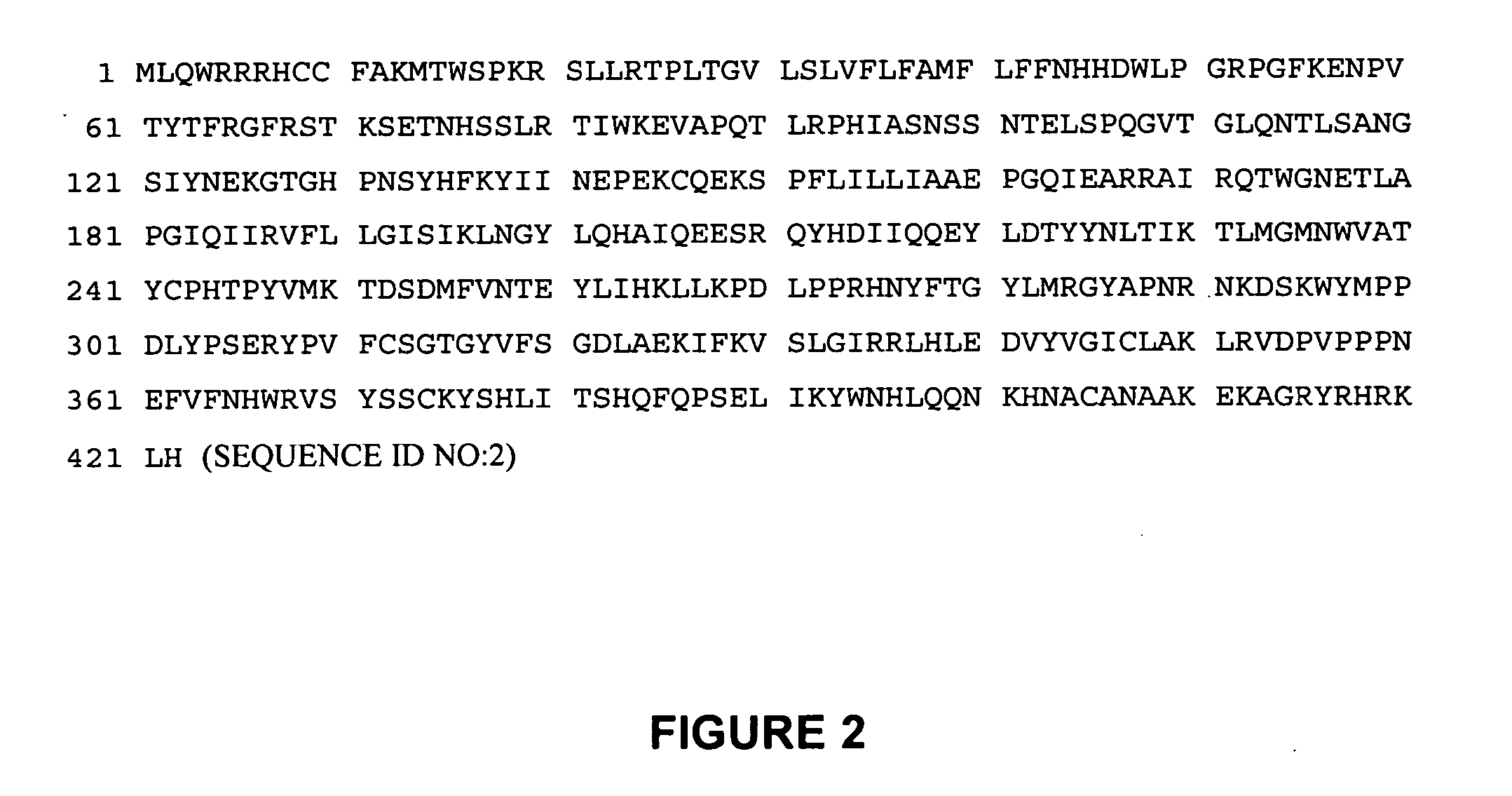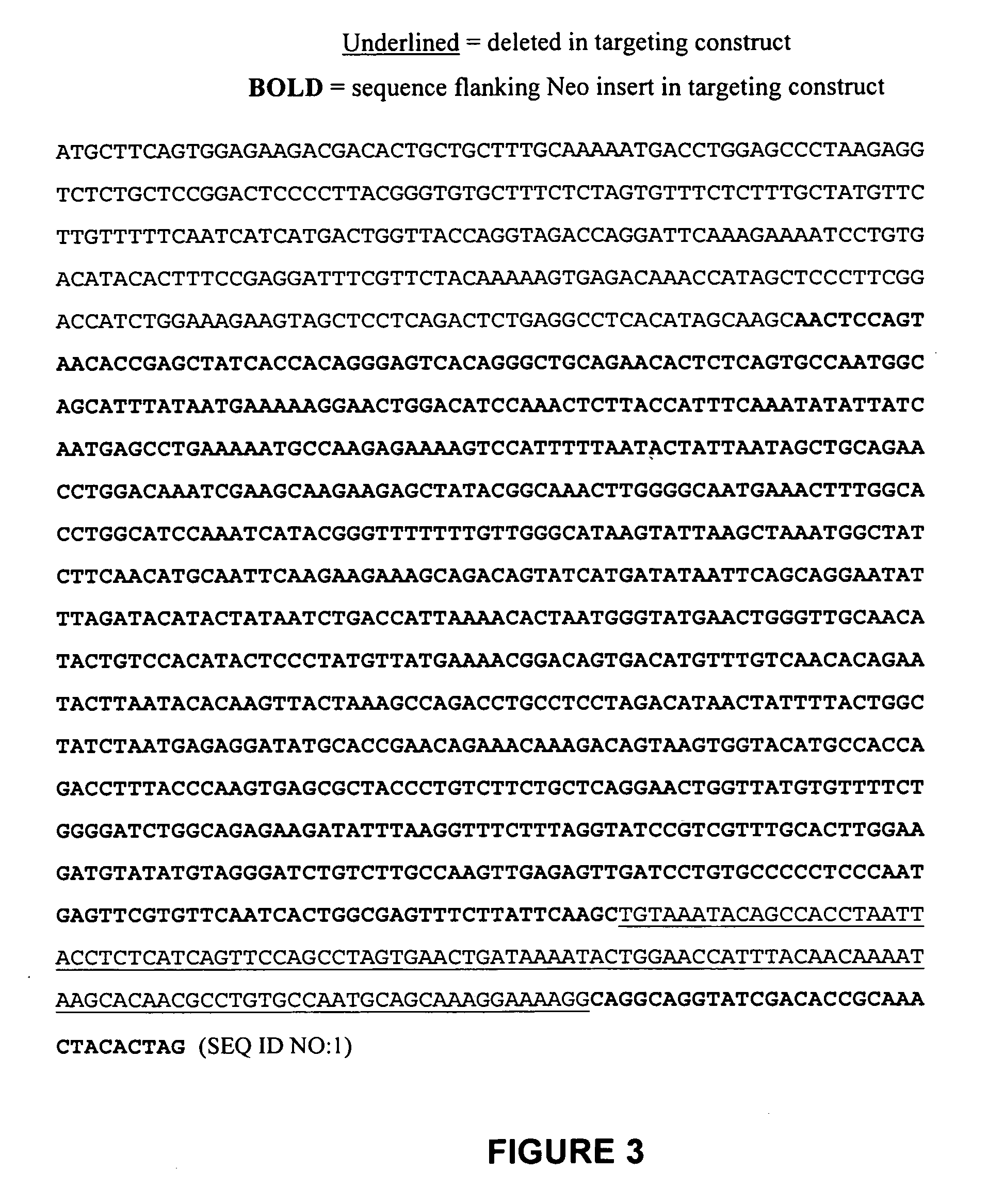Transgenic mice containing beta3GalT2 gene disruptions
a technology of beta3galt2 and mice, applied in the field of transgenic mice, can solve the problems of poor prognosis for cancer treatment, and achieve the effects of reducing body weight, reducing body length, and reducing body weight to body length ratio
- Summary
- Abstract
- Description
- Claims
- Application Information
AI Technical Summary
Benefits of technology
Problems solved by technology
Method used
Image
Examples
example 1
Generation of Mice Comprising β3GalT2 Gene Disruptions
[0204] To investigate the role of β3GalT2, disruptions in β3GalT2 genes were produced by homologous recombination. Specifically, transgenic mice comprising disruptions in β3GalT2 genes were created. More particularly, as shown in FIG. 4, a β3GalT2-specific targeting construct having the ability to disrupt a β3GalT2 gene, specifically comprising SEQ ID NO:1, was created using as the targeting arms (homologous sequences) in the construct the oligonucleotide sequences identified herein as SEQ ID NO:3 or SEQ ID NO:4.
[0205] The targeting construct was introduced into ES cells derived from the 129 / OlaHsd mouse substrain to generate chimeric mice. The F1 mice were generated by breeding with C57BL / 6 females. The resultant F1N0 heterozygotes were backcrossed to C57BL / 6 mice to generate F1N1 heterozygotes. F2N1 homozygous mutant mice were produced by intercrossing F1N1 heterozygous males and females.
[0206] Genomic DNA from the recombina...
example 2
[0209] Gene expression analysis was performed using the knocked-in lacZ as a reporter gene and RT-PCR. In the case of lacZ expression assays some signals may not have been detected due to insertional silencing or insertional mutations.
[0210] RT-PCR Expression. Total RNA was isolated from the organs or tissues from adult C57BL / 6 wild-type mice. RNA was DNaseI treated, and reverse transcribed using random primers. The resulting cDNA was checked for the absence of genomic contamination using primers specific to non-transcribed genomic mouse DNA. cDNAs were balanced for concentration using HPRT primers. RNA transcripts were detectable in various tissues including, the brain, cortex, subcortical region, cerebellum, brainstem, olfactory bulb, spinal cord, eye, Harderian gland, heart, lung, liver, pancreas, kidney, spleen, thymus, lymph nodes, bone marrow, skin, gallbladder, urinary bladder, pituitary gland, adrenal gland, salivary gland, skeletal muscle, tongue, stoma...
example 3
[0277] A complete physical examination was performed on each mouse. Mice were first observed in their home cages for a number of general characteristics including activity level, behavior toward siblings, posture, grooming, breathing pattern and sounds, and movement. General body condition and size were noted as well identifying characteristics including coat color, belly color, and eye color. Following a visual inspection of the mouse in the cage, the mouse was handled for a detailed, stepwise examination. The head was examined first, including eyes, ears, and nose, noting any discharge, malformations, or other abnormalities. Lymph nodes and glands of the head and neck were palpated. Skin, hair coat, axial and appendicular skeleton, and abdomen were also examined. The limbs and torso were examined visually and palpated for masses, malformations or other abnormalities. The anogenital region was examined for discharges, staining of hair, or other changes. If the ...
PUM
| Property | Measurement | Unit |
|---|---|---|
| length of time | aaaaa | aaaaa |
| thickness | aaaaa | aaaaa |
| body weight | aaaaa | aaaaa |
Abstract
Description
Claims
Application Information
 Login to View More
Login to View More - R&D
- Intellectual Property
- Life Sciences
- Materials
- Tech Scout
- Unparalleled Data Quality
- Higher Quality Content
- 60% Fewer Hallucinations
Browse by: Latest US Patents, China's latest patents, Technical Efficacy Thesaurus, Application Domain, Technology Topic, Popular Technical Reports.
© 2025 PatSnap. All rights reserved.Legal|Privacy policy|Modern Slavery Act Transparency Statement|Sitemap|About US| Contact US: help@patsnap.com



